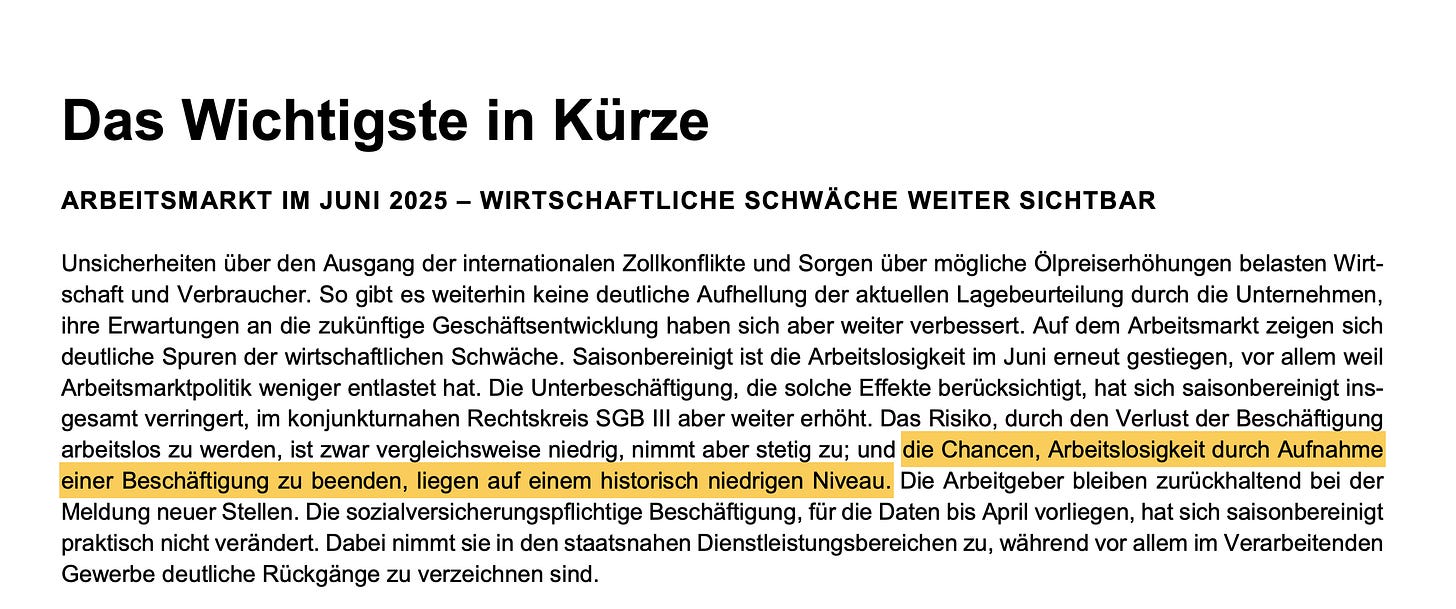In a recent blog entry, Heiner Flassbeck argues how a supply shock can trigger a demand shock and how a restrictive monetary policy can completely stifle companies' investment activity against this backdrop.
The criticism of the former Chief-Economist at the UNCTAD is primarily directed at the ECB.
Although the ECB has cut interest rates after it became clear that the expectations of the hawks on the Central Bank Council regarding inflation were completely wrong.
What is uncanny right now is that the ECB is hesitating to cut interest rates further because it is trying to find a “neutral” interest rate that neither slows down nor stimulates the economy.
For Europe as a whole, where, unlike in the US, fiscal policy remains on the brakes, this attempt by the ECB represents according to Mr. Flassbeck a fatal blockade of economic policy and risks Europe losing another whole decade.

Let’s unpack the question step by step how supply shocks, demand reactions, and policy responses interact in the real economy.
What is a supply shock?
A supply shock is a sudden and unexpected disruption to the availability or cost of key goods or inputs in an economy. It reduces productive capacity or raises production costs.
There are basically two types:
Negative supply shock → less supply or higher input costs
→ e.g., war, pandemic, natural disasters, OPEC embargo.
Positive supply shock → more supply or lower costs
→ e.g., tech breakthrough, cheap energy.
What are the immediate consequences of a negative supply shock?
For consumers:
Prices rise (especially on essentials: energy, food, transport)
Purchasing power falls (real wages shrink)
Consumption may decline, especially for non-essentials
For producers:
Costs rise → profit margins squeezed
Supply chain disruption → delays, shortages
May reduce output or pass costs on via price hikes

There are some historical examples:
1. 1970s Oil Price Shocks
Triggered by OPEC embargo (1973) and Iranian Revolution (1979)
Oil prices quadrupled → production cost shock across industries
Stagflation: low growth + high inflation
Central banks responded with high rates → deep recessions
Yes, this was a supply shock that eventually triggered a demand shock - as inflation eroded incomes, and policy responses (rate hikes) crushed demand.
2. Ukraine War & Russia Sanctions (2022–)
Natural gas, oil, wheat, and metals supply disrupted
Europe faced energy cost spikes
Global food prices rose
Russia lost Western markets; global supply chains reoriented
Another classic negative supply shock, especially for energy and food.
It forced consumers to cut back, while governments subsidized to soften the blow.

Can a Supply Shock Cause a Demand Shock?
Yes - indirectly.
Supply shocks → higher prices → lower real incomes → weaker demand
Also, if central banks tighten aggressively (to fight inflation), policy-induced demand shocks can follow.
So:
A supply shock can trigger a demand shock if:
Inflation hits consumer spending power hard, or
Central banks respond too forcefully (overkill).

Case Study:
COVID supply shock + policy tightening (2021–2023)
Initial shock: Global supply chains frozen, production halted
Followed by: Massive reopening demand + shortages
Fed, ECB, SNB etc. raised rates sharply in 2022–2023 to tame inflation
Result: Credit costs surged, housing and consumption cooled
Many economists argue that central banks tightened too much, too quickly - based on inflation that was largely supply-driven (energy, logistics, labor shortages).
So yes – it’s appropriate to ask:
Did “too restrictive” monetary policy amplify the demand shock?
Yes, quite possibly.
Especially because inflation was not driven by excess demand alone.
Supply shocks can become demand shocks - especially when monetary policy is aggressively reactive.
Summary:



